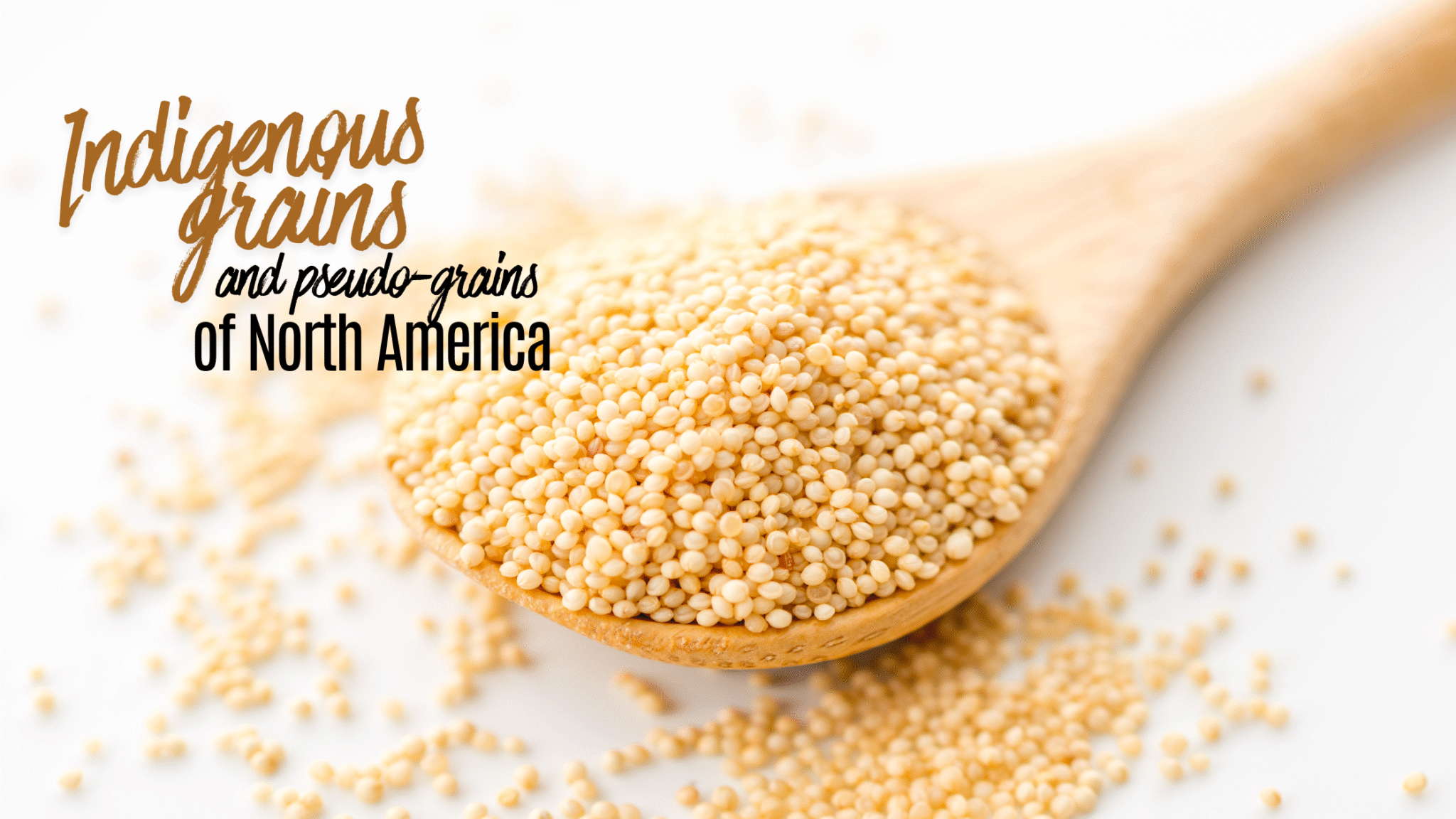Last Updated on October 20, 2025 by higherring
Fall is the best time to celebrate US and North American indigenous grains as October 13th is Indigenous People’s Day and and November is Native American Heritage Month. Native agriculture thrived for generations before Europeans colonized the Americas. When you think of indigenous agriculture here in the US, you may think of the story of the Three Sisters – corn, beans and squash. These three are always planted with each other, growing together like family and nurturing the soil for one another. But we shouldn’t forget the role that grains also played in historical diets, as well as the major role it plays in our diet today!

Indigenous Grains
There are many grains that are native to the United States and North America. Even more than have been brought over and fully embraced in our diets and our agriculture systems for hundreds of years.
Native grains (also known as cereals) and pseudocereals to the United States include:
- Amaranth
- Wild rice
Amaranth
Amaranth is a leafy green related to swiss chard. While you can cook and eat the greens, the seed itself is also used like a grain. Because the seeds are eaten and used like grains, it is given the name “psuedo-grain.” Amaranth is a great crop to grow because it grows fast, has high drought tolerance and can deal with harsh soil conditions. It’s also a complete protein, containing all 9 essential amino acids. It’s believed to have originated in Central America and Mexico, and was a staple grain for Mayans and Aztecs. Now it’s used in cooking and baking across the world in things like popped amaranth, breakfast porridge or oatmeal mixes and baked gluten-free items.
Wild Rice
Wild rice is actually a aquatic grass found in the Minnesota region, not like a traditional rice! It’s also Minnesota’s official state grain, as there are more acres of natural wild rice in Minnesota than any other state in the US. Historically, this plant was a staple in the diet of many tribes in the Great Lakes region. You can still buy wild rice today, although it is usually more expensive than traditional rice due to it’s limited growing region today.
Other grains and pseudocereals that have been adopted into our US culture over the past thousands of years include:
- Millet
- Quinoa
- Sorghum
- Buckwheat
- Wild Oats
Millet
Millet is one of the world’s oldest cultivated crops, found in ancient cities in Asia and Africa. It’s easy to grow in arid conditions and is drought-resistant, providing a staple crop in difficult climates. While millet is traditionally grown for bird seed or animal food here in the US, we think that millet is a delicious and nutritious addition to a gluten-free diet. More than half of the millet grown in the US is grown in Colorado, with the greater Montana growing region picking up the rest.
Quinoa
Quinoa is originally native to South America and continues to thrive in production in Peru, Bolivia and Ecuador. This valuable gluten-free crop survives in thin soil and harsh climates of high altitudes. Quinoa is grown in the US in the high plains of the Rocky Mountain region. While typically seen as a staple in regions in South America, it bursted onto the gluten-free food scene in the 2000’s and has become a popular ancient grain found in pasta, grain bowls, and even baked goods.
Sorghum
Sorghum originated in Africa and then moved into Europe and Asia. Sorghum was thought to have been introduced to North America via the transatlantic slave trade in the 18th century. Sorghum is a great crop because it’s drought tolerant, nutrient dense and environmentally friendly, and was valuable to plant in the dryer regions of West. While it can be used as animal feed worldwide, it’s still a staple grain in India and Central America. It’s also a great grain to use in gluten-free food. Sorghum is a fantastic sweeter grain to cook and bake with! Did you know that some gluten-free beer even uses sorghum instead of barley? Today the US produces the most sorghum in the world. Currently Kansas, Texas, and Colorado are the US states growing the most sorghum.
Buckwheat
Buckwheat was originally domesticated in Southeast Asia, and was introduced to the US by Dutch settlers in the 1800’s. Buckwheat is known to be a great rotational crop, helping to promote a healthy soil microbiome. While buckwheat isn’t the most popular crop in the US, it’s grown in over 20 states! If you’re not familiar with the name buckwheat, you might know it from a popular dish like soba noodles (they’re made from buckwheat flour!).
Oats
Oats came to North America from Europe and were primarily used as animal feed. But the use of wild oats by indigenous cultures were observed even in the 1800’s. Wild oats were listed in Food Plants of the North American Indians in 1886 citing that avena fatua, or wild oats, were made into flour by “various California tribes.” Some even speculate the oats traveled through Europe as a contamination of wheat and barley trade – part of the reason why oats are often difficult in the gluten-free diet unless meticulously grown and harvested. Modern species of oats can grow throughout many regions of North America, mostly in the northern regions of the US and Canada. ZEGO double protein oats are grown in the greater Montana growing region.
These native North American grains are a great fit for a modern gluten-free diet!
More resources
